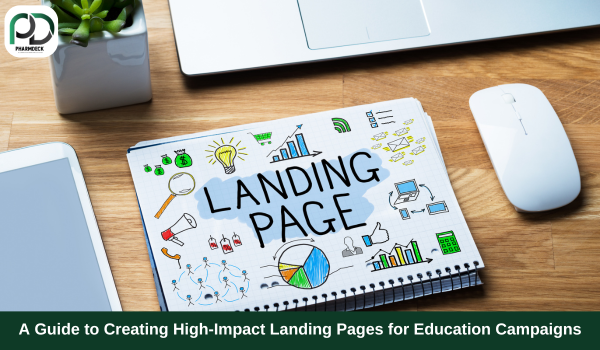
Creating a high-impact landing page is crucial for the success of education campaigns. An effective landing page not only captures the attention of prospective students but also compels them to take action, such as enrolling in a course or requesting more information. Here are key strategies to design a landing page that converts:
1. Craft a Clear and Compelling Headline
Your headline is the first element visitors notice. It should be concise and convey the unique value of your educational offering. For instance, instead of a generic “Welcome to Our Online Courses,” opt for “Advance Your Career with Our Accredited Online Programs.”
2. Align Content with Campaign Messaging
Ensure that the content on your landing page mirrors the messaging of your advertisements or promotional materials. Consistency between your ads and landing page enhances user experience and can improve your ad quality scores, leading to reduced cost-per-click (CPC).
3. Use Engaging Visuals
Incorporate high-quality images or videos that resonate with your target audience. Visuals should reflect the educational environment and outcomes, helping prospective students envision themselves benefiting from your programs.
4. Place a Prominent Call-to-Action (CTA)
Your CTA should be strategically placed above the fold, making it immediately visible without scrolling. Use action-oriented language like “Enroll Now,” “Get Started,” or “Request Information.” A well-designed CTA button should stand out and guide the user towards the desired action.
5. Simplify Forms
If your goal is to collect information, keep your forms short and straightforward. Request only essential details such as name and email address. Studies indicate that conversion rates can drop by up to 40% when a fourth field is added.
6. Optimize for Mobile Devices
With an increasing number of users accessing content via mobile devices, it’s imperative that your landing page is mobile-friendly. This includes responsive design, fast loading times, and easy navigation to ensure a seamless experience across all devices.
7. Highlight Unique Value Propositions
Clearly state what sets your educational programs apart. Whether it’s experienced faculty, flexible scheduling, or industry partnerships, make sure these benefits are prominently featured to persuade potential students.
8. Include Social Proof
Incorporate testimonials, success stories, or statistics that showcase the success of your programs. Social proof builds credibility and can significantly influence the decision-making process of prospective students.
9. Maintain a Clean and Focused Design
Avoid clutter by focusing on essential information and using whitespace effectively. A clean design helps direct the visitor’s attention to key elements like the CTA and value propositions, enhancing the overall user experience.
10. Test and Optimize
Regularly perform A/B testing on different elements of your landing page, such as headlines, images, and CTAs, to determine what resonates best with your audience. Continuous optimization based on data-driven insights will help improve conversion rates over time.
Conclusion
By implementing these strategies, educational institutions can create landing pages that effectively engage visitors and drive higher conversion rates. For professional assistance in building and optimizing your landing pages, consider partnering with experts like Pharmdeck, who specialize in digital marketing services tailored to the education sector.

Add a Comment